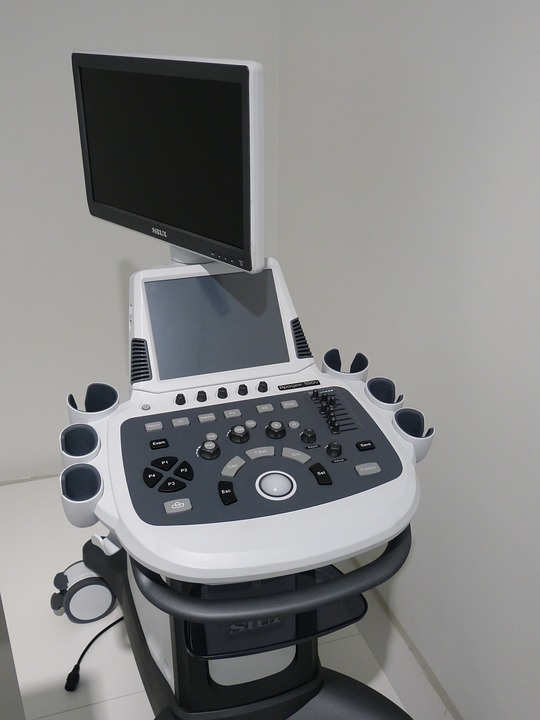Sound energy is produced when an object vibrates, which results in noise. The sound vibrations cause waves of pressure that travel through a medium such as air, water, and wood.
Sound energy is defined as “the movement of vibration through matter”. There must be a medium through which sound travel, it cannot travel through a vacuum and sound energy is normally measured by its intensity and pressure, in special units known as Pascal and decibels.
This post gives you a detailed explanation of such sound energy examples
- An air conditioning fan
- An airplane taking off
- A balloon popping
- Sound energy in a microwave
- A broom swishing
- A buzzing bee
- Fireworks exploding
- A flag flapping in a strong breeze
- Meat sizzling on the grill
- A radio
- A waterfall
- A whistle
- Waves crashing into a rocky shore
- Car breaks squealing
- A vehicle crashing
- A car door closing
- A vehicle engine
- A car horn honking
- A siren
- Tires squealing when racing
- A signal
- A jackhammer
- Smoothing wood with sandpaper
- Coughing
- Laughing
- Sneezing
- Belching
- Baby crying
- A xylophone tinkling
- Electric guitar whining
- A train moving on the tracks
An air conditioning fan
Different things in an air conditioning fan can be creating sound energy it could be one of the motors but it could also be air resistance. If push air to another area of the home if the intake is too small motor noise is reduced by quieting the compressor.
An airplane taking off
When the airplane is take off it causes sound energy because of the exeunt of its heave over the runway with a repute for the act of the wind. Sound energies are played by the aircraft engine which converts chemical energy into mechanical energy while taking off.

A balloon popping
The reason behind the sound energy in balloon popping is the sudden release of pressure, this higher pressure causes bigger bursting. The sudden rupture of stretched rubber contributes to sound.
Sound energy in a microwave
Microwave causes sound energy during operation because the magnetron uses high voltage to generate the microwave frequency that cooks the food and normally emits a low hum however if the magnetron is damaged it may begin emitting high pitched sound energy.

A broom swishing
When we clean the floor using a broom then the sound energy is created which is called swishing. The broom consists of a brush of strands hence the broom creates sound energy while swishing.
A buzzing bee
The bee cause sound energy by buzzing because the wings of the bee flap very rapidly these wing beads create vibration in the wind near them and cause sound energy.
Fireworks exploding
When fireworks explode we hear the delayed sound energy because the fireworks exploded so well-built up and the speed of light is faster than the speed of sound.
A flag flapping in a strong breeze
Layers of strong breeze start with unequal haste on the two sides of the cotton flag due to it, there will be unequal pressure on the two flags which leads to flapping then sound energy is created.
Meat sizzling on the grill
When meat is sizzling we have high heat on a grill it makes a sound and turns brown, bursting up with water via oil to prepare a sizzling sound.

A radio
Electromagnetic radio waves convert to mechanical shudder in the speaker when radio ingest radio waves then sound energy waves created.

A waterfall
Low, high, and medium sound energies are formed in waterfall because waterfall of enormous volume from huge height impact by changing depth of water.
A whistle
Blowing a whistle forces air via the mouth then the air enters the whistle and escapes from a hole on the other end creating audible sound energy in the whistle.
Waves crashing into a rocky shore
Wind and rain form the wave surface, and at the wave, eye edge bubbles trapped under waterfalls onto a hard wall of rock radiate sound energy.
Car brakes squealing
The Brake system works on brake pads and rotor, when we apply to break the pads squeezing on the outside surface pad touches the rotor to create sound.
A vehicle crashing
When stringent material crashes on a harsh floor if two vans bombard each other hence it vibrates and creates sudden sound energy.
A car door closing
The car door makes a sound when close because of spare lube on the sub latch roller axle..
A vehicle engine
If the car is running louder than it used to make strange sound energy due to a damaged muffler.
A car horn honking
The horn contains a copper coil in which current flows through it creating a magnetic field then the horn flop inside the midriff creates sound energy.
A siren
Siren makes sound energy because they have high-efficiency loudspeakers with pursued magnifier and tone generation imitate the siren sound.
Tires squealing when racing
Racing produces sound energy in tires because of Doppler effects so if a tire hits a rough surface during racing is very fast hence sound is created.
A signal
In the microphone, the signal makes sound energy because there is air pressure variation that generates electrical signals that produce sound.
A jackhammer
Rock drilling using a Jackhammer create sound energy because compressive strength increase air pressure and scraping of rock decrease hence requiring high pressure, and thrust creates sound energy.
Smoothing wood with sand paper
It creates sound energy because sandpaper is wrapped around the block which rubs on a block of wood with even pressure create sound.
Coughing
When we cough we hear the sound because our airways are narrow during coughing which creates sound energy.
Laughing
Muscles between the ribs initiation to persevere vast, hardened contraction knead air out and makes sound energy.
Sneezing
During sneezing air evades from the nose hence sound energy is created which depends on lung capacity.
Belching
During belching, in superior alimentary canal elevation pressure air preparing structure, and behind throat vibrate and causes sound energy.
Baby crying
The sound energy is created when a baby cries because the baby workout to authority the air that comes from their lungs and uses vocal cords which put a plinth for speech.
A xylophone tinkling
Xylophone consists of a set of tuned keys of a piano when the hammer assert the bar creates a shudder which creates waves making sound energy.
Electric guitar whining
Bend the string with the finger on the guitar which creates a whiny kind of sound energy because too much pressure can bend the string out of tune.
A train moving on the tracks
Train wheels roll over on tracks creating sound energy so when trying moves vibrations are created because of hardness and inconsistency on the wheel and train surface.
Uses of sound energy
- Battle field
- Shipping industry
- Music industry
- Cellular telephone
- Motion picture film sound
- Televisions
- Phonographs
- Electronics
- Hearing aids
- Audio tape archivist
- Animals use sound energy
- Speakers
- Stethoscopes
- Microphone
- Audible communication
- Science
- Ultrasound imaging
- Ultrasonic welding
- Masking and privacy
- Localization
- Enhancing cell growth
- Sound creating art
- Stabilizing brain waves
- Sonic boiler
- Plant growth
- Revealing natural geometry
- Noise cancellation
- Levitation
- Echolocation
- Seismic imaging
Battle fields
Sound is used as a weapon in the war field, for example, sonic weapons are used to perpetrate adversary and acoustic equipment which uses the effect of sound to cause potentially lethal disaster.
Shipping industry
Sonar sound navigation and ranging are used in the shipping industry for detecting submerged objects through sound waves reflected by objects and also locating enemy ships.
Music industry
The music instruments and amplifier produce sound as music which is used in healing the body by deletion unconstraint and body aches.
Cellular telephone
The telephone uses sound energy for communication in which sound energy is transported in the midriff and converted to electrical energy and another phone receives this electrical energy then converted to radio waves for intimation.
Motion picture sound recording
The photographic scene uses a unique system recording that gives the highest flexibility in the soundtrack but motion picture sound recording uses a couple of systems to separate the image from the soundtrack so sound can perfectly be matched ocular.
Televisions
In television, electrical energy from the battery is converted to visible light, and television consists of a camera that steers a depiction and sound into a denotation, the transmitter sends the logogram over the air, and the receiver captures the logogram and orders it back into picture sound.

Phonographs
Phonograph consists of reproducer containing diaphragms which are connected to needle by thin wire when it is operated sound waves give same intensity, frequency as originals. The phonograph is the earliest technology to playback recordings we could record at home.

Electronics
The piezoelectric generator is a power generating device it contains a transducer that creates noise and causes a vibration transducer to convert this vibration into electrical energy.
Hearing aids
Hearing aids are designed to dilate sound which improves the sage language in a noisy environment. A small computer in a hearing aid turns up incoming sound signals this accommodates for person’s hearing loss.
Audio tape archivist
Audiotape archivist is a sound recording and reproduction device it uses magnetic tape as storage to move to tape-record fluctuating signals in a document to the audio signal.
Animals use sound energy
Animals use sound energy for auditory communication they use noise-producing customs such as knocking and clicking.
Speakers
The speaker is charging with one battery which is boosted and connected to the battery and the battery is connected with the inverter, it is connected to a relay module and microcontroller and the switch is on sound energy into electrical energy.
Stethoscopes
Stethoscope consisting of air buds at the top put into ears and diaphragm at bottom-placed on patient skin for one minute and listen heart sound, abdominal sound.
Microphone
The microphone work using electromagnetic induction, the sound wave hit a diaphragm to a coil surrounded by a magnet which creates a magnetic field in the coil sound waves hitting the diaphragm are moving coil creates an electric current.
Audible communication
The sound of road construction is audible in the early morning and the dog whistle cannot hear by humans because the dog whistle sound is less than human hearing.
Science
For sound science experiment, take tightly wrap cover on top of empty bowl take uncooked rice pour on the top then take metal sheet near the bowl hit metal the rice moves.
Ultrasound imaging
It uses sound waves to create images of the human body it is commonly used to visualize fetuses in the womb during pregnancy.

Ultrasonic welding
It is a welding process in which vibrations which means sound energy are used to generate heat for welding, this works on the principle of ultrasonic vibration to create dynamic shear stress.
Seismic imaging
This technology measures reflected acoustic energy waves it gives the method of mapping sub-surfaces it works by sending acoustic energy waves created from sound waves through the layers.
Masking and privacy
Sound masking is a dedicated audio system is add unobtrusive background sound the purpose is to reduce the intelligibility of speech.
Localization
It refers to the listener’s ability to identify the location and human sense from any place in the sound field.
Enhancing cell growth
Surface acoustic waves enhanced cell growth by induced vibration, cell growth depends on surface acoustic wave intensity.
Sound creating art
When a bow plays the metal square parts of the plate begin to vibrate couscous move around until they reach a plate that isn’t vibrating then resulting in art.
Stabilizing brain waves
Music sound helps in relaxation, and concentration because dopamine is released during moments of enjoyment while listening to music.
Sonic boiler
It uses the power of sound to boil water high frequency sonic vibrations are measured within the silver bulb causing water to boil.
Plant growth
Playing music for plants helps them grow faster and healthier grow Indian botanists conduct several experiments on music and plant growth he found that certain plants grew an extra 20% height when exposed to music.
Revealing natural geometry
Sound waves create the geometric form which is a study of cymatics, cymatics is the science of steering noise into images.
Noise cancellation
Noise cancellation is the abstention of unneeded code in an electronic circuit. Noise-canceling earphones reduce the noise level, for example, one plus buds pro and Samsung galaxy buds pro.
Levitation
Research from Spain and UK have discovered a new technique of acoustic levitation that allows an object to move independently on any axis using a specific kind of sound waves.
Echolocation
Bats continuously emit pulses of the sound of ultrasonic frequency higher than 20000HZ, bats hear an echo of their voice since they are using echoes to locate how far something is we call this technique echolocation.
Also Read:
- How to maximize potential energy conversion in gravity based energy storage systems
- How to estimate gravitational energy in tidal power generation
- Why does energy conversion matter in wind turbines
- Can potential energy be negative
- How to calculate maximum energy
- How to find energy turned into heat
- Why is energy loss inevitable in real world systems
- Examples of potential energy
- How to find energy in a rotating reference frame
- How to design chemical energy based fire suppression systems for safety

Hi,
I am Megha B R, I have completed my Post-Graduation in Solid State Physics and pursuing B. Ed. I am a Physics enthusiast. As an Academic writer, my goal is to reach the readers in a simplified manner through my articles.
Let’s connect through LinkedIn-
